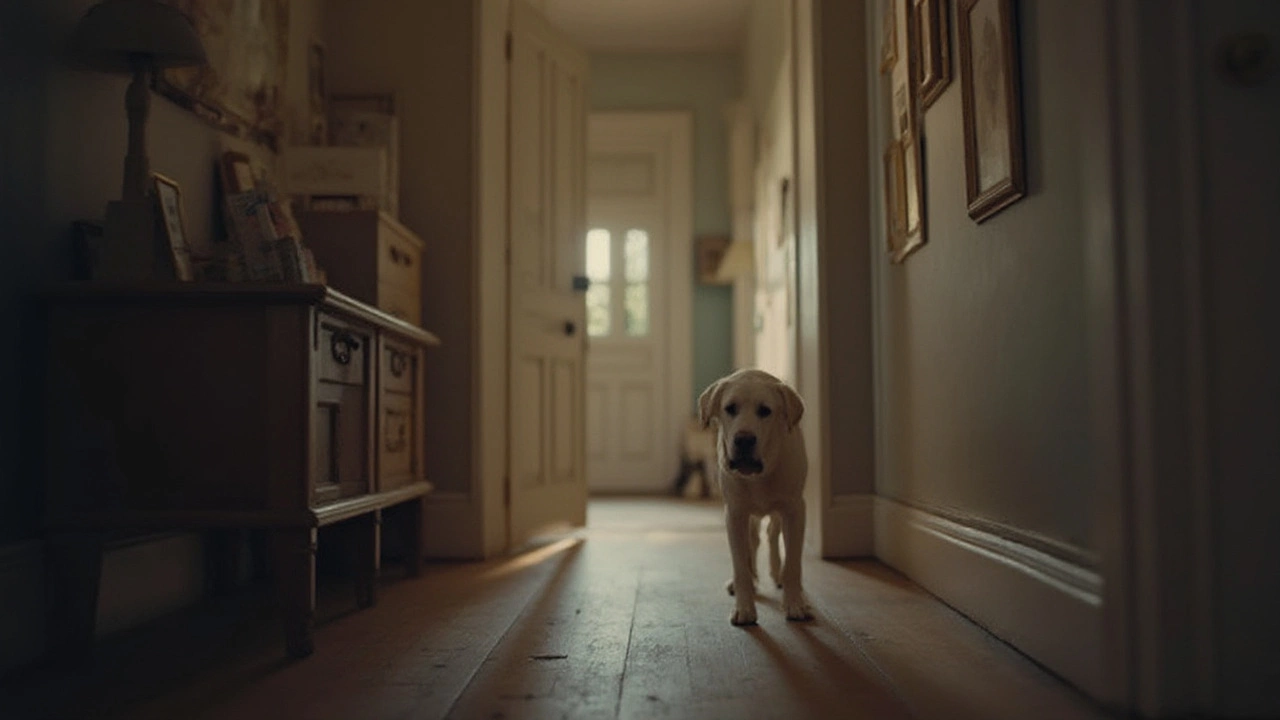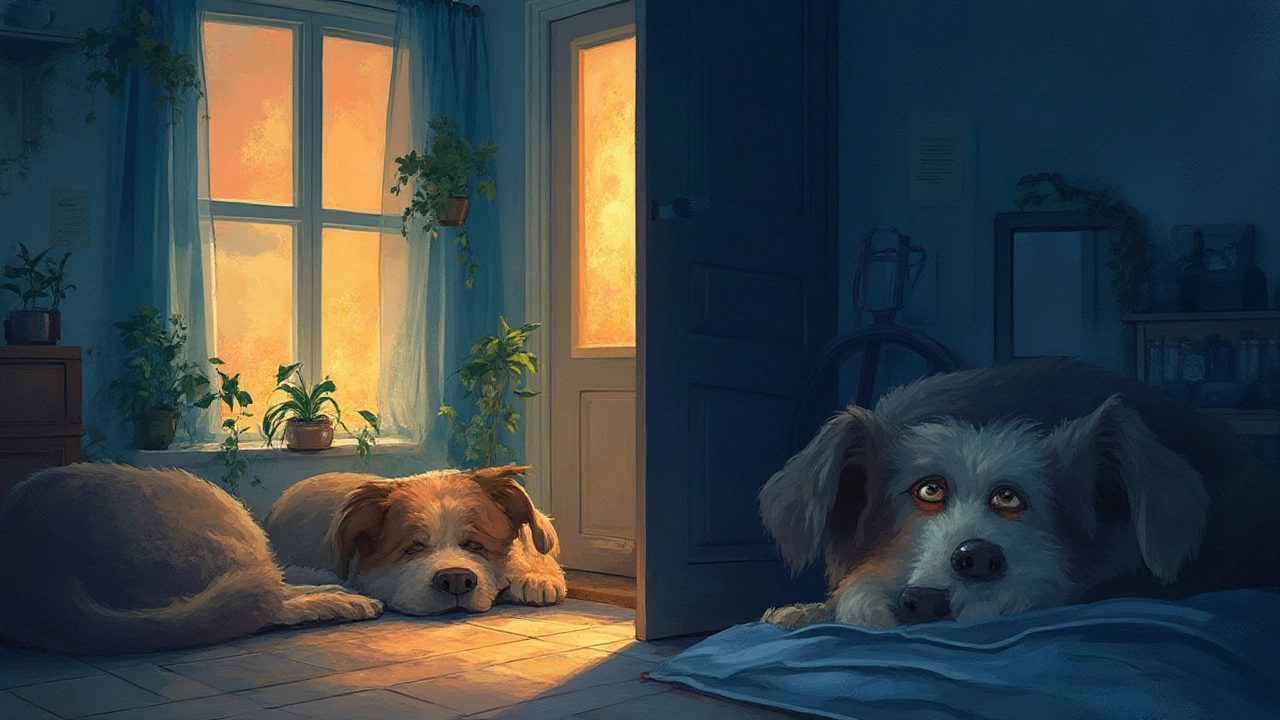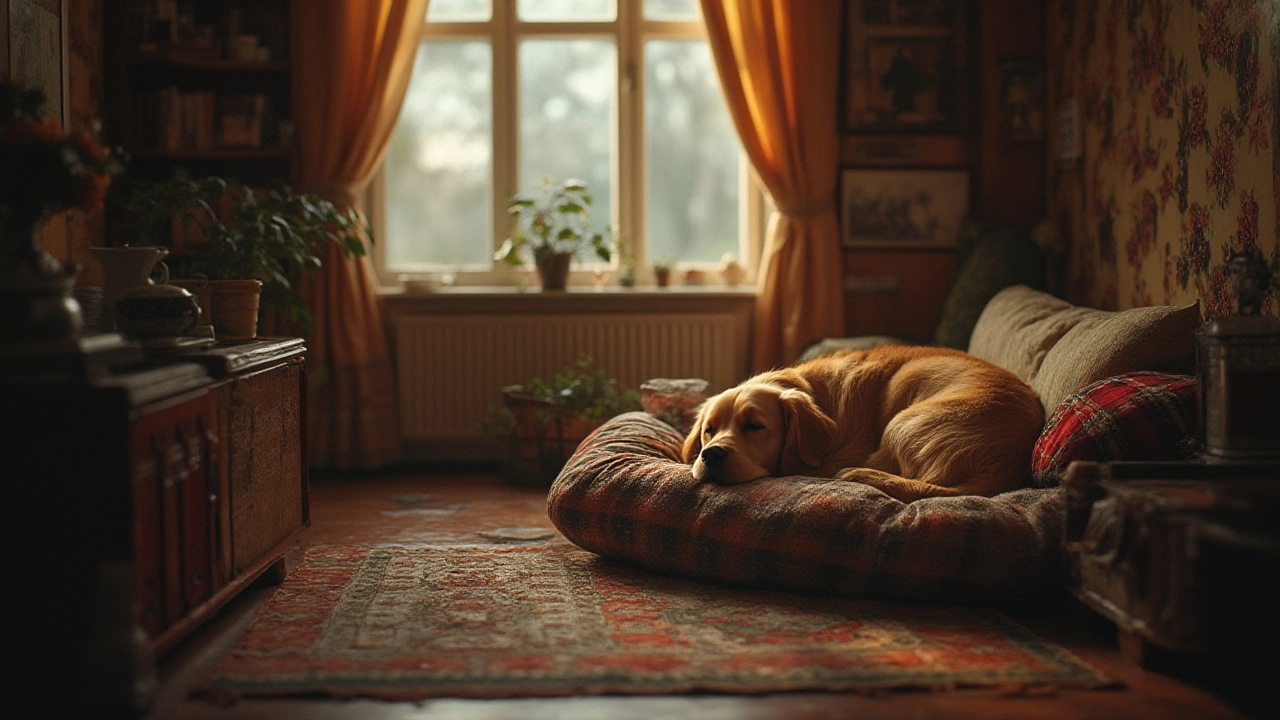Picture this: You’re ready to hit the pillow, but then you pause and glance at your dog curled up in the corner. Do you fumble for the light switch, or do you leave it on, just in case your pup prefers a little nighttime glow? If this simple decision leaves you second-guessing, you’re definitely not alone. Tons of pet parents wonder about the best approach—should you leave the light on for your dog at night, or is your dog happier sleeping in darkness? Let’s break down what we know and what actually matters to your canine buddy after dark.
What Science Tells Us About Dogs, Darkness, and Sleep
Dogs get their cues for sleep differently than humans, but they still respond to changes in light and dark. Most dogs don’t need a nightlight, and some even sleep better in darkness. Unlike us, dogs evolved as both hunters and scavengers, often active during dawn and dusk—what scientists call crepuscular behavior. So, dogs can see in low light way better than we can, thanks to a special layer of cells in their eyes called the tapetum lucidum. This bounces light back through the retina, letting dogs spot movement and shapes long after the sun goes down.
Here’s a cool fact: The average dog retina can detect light at around five times dimmer than the human eye. So while you might trip over the dog bed in the dark, your furry friend doesn’t have the same problem. Puppies and seniors, though, sometimes have worse eyes, and this can lead them to bump into stuff if it’s pitch black.
Let’s get practical. Most vets suggest dogs don’t strictly need a nightlight unless there’s a medical or safety reason, like impaired vision due to cataracts or age. In fact, too much light at night can mess with your dog’s body clock, the circadian rhythm that syncs sleep and wakefulness. If your dog struggles to stay asleep or is restless, check if there’s too much light leaking into their room from streetlamps or hallway lights. You might unknowingly be sabotaging their deep REM sleep—yep, that’s the phase where dogs dream (and sometimes run in place while snoozing!).
On the other hand, some dogs—especially those that are newly adopted or have separation anxiety—can get a bit spooked by the pitch dark. If your dog barks at shadows, paces restlessly, or seems uneasy during the night, try adding a dim nightlight nearby. You don’t want a blaring lamp, just a soft glow.
Here’s a quick table showing how different levels of darkness affect dogs compared to humans:
| Light Condition | Dog Vision | Human Vision |
|---|---|---|
| Daylight | Excellent | Excellent |
| Dusk/Dawn | Very Good | Okay |
| Night (no streetlights) | Good/Moderate | Poor |
| Pitch Black | Limited/None | None |
So, if you usually turn off every single light and notice that your senior dog bumps into things on the way to their water bowl, it might be time to add a small, motion-detecting nightlight in their favorite hallway. Otherwise, if your dog seems relaxed in darkness, don’t feel like you need to keep the lights on “just because.”

Nighttime Anxiety in Dogs: Is the Dark Actually Scary?
If your dog shows nervous behaviors or freaks out after lights out, it’s tempting to think they’re afraid of the dark. The reality? Fear of the dark in dogs is pretty rare, but anxiety in new situations, strange noises, or disruptions can spike after sundown. Sometimes, it’s not the darkness, but what goes on in the house after everyone else turns in—street noises, neighborhood cats, or the hum of appliances—that triggers unsettled behavior.
Separation anxiety tends to surface at night for a lot of dogs. You go to bed, close your door, and your pup suddenly feels alone. If this fits your dog, experimenting with a nightlight can help during the transition, especially if you’ve just brought home a rescue or puppy. Some dogs may benefit from calming routines before bedtime, like a cozy crate with familiar blankets and gently playing white noise.
Here are some signs your dog might feel uneasy at night and possible ways to help:
- Pacing, whining, or howling when you turn off the light
- Scratching at doors, jumping on beds, or trying to get your attention
- Refusing to go to their bed unless you stay nearby
- Accidents inside the house overnight (when normally house-trained)
To ease nighttime anxiety, you could try:
- Leaving a dim nightlight in the room or hallway
- Letting them keep access to their favorite sleeping spot (avoid locking them in a room they’re not used to)
- Sticking to a consistent bedtime routine, including a bathroom break, quiet petting session, or short walk right before bed
- Using a pheromone diffuser plug-in—vets often recommend these for stressed-out pets, and they’ve shown real success in studies for calming nervous dogs
- Trying a snuggly shirt or calming blanket, especially with anxious or new pups
If you’re worried about “spoiling” your dog by adding a light, don’t stress—most dogs adapt pretty quickly to changes in routine. It’s worth keeping in mind that dogs have fewer cones (the part of the eye that sees color) than we do, so they don’t perceive bright flashes or colored lights the same way. Choose a soft, warm nightlight if you decide to go that route. Avoid blinking or color-changing ones, which could be confusing rather than comforting.
Interesting fact? Studies have found that rescue dogs coming from shelters—where lights were often left on 24/7 for safety—sometimes struggle with pitch-black nights at first. A slow transition, turning off the light after a few nights with a dimmer, helps prevent extra stress during their early weeks at home.

When to Leave a Light On: Safety, Health, and Special Circumstances
There are a few cases where keeping a light on isn’t just about comfort—it’s about safety or health. If your dog is elderly, goes blind, or has health needs that require nighttime mobility, light could help prevent bumps, falls, and confusion. Dogs with medical issues like diabetes or Cushing’s may drink and pee more at night, wandering to their water bowl or to the yard. In these cases, a nightlight keeps navigation simple and accidents to a minimum.
Here are scenarios when leaving a nightlight can make a real difference:
- Senior dogs: Aging eyes struggle in darkness, so a light near stairs or food stations reduces trips and stumbles.
- Puppies: Little ones might still be house-training or get nervous alone, so a gentle glow reassures them during midnight wakeups.
- Dogs with vision loss: Cataracts, PRA, and blindness are common in older dogs and certain breeds. Lights, especially in hallways and near favorite hangouts, help them find their way.
- New rescues: Dogs from chaotic backgrounds settle better if you mimic shelter lighting, then gradually ease toward darker, quieter nights.
- High-traffic homes: If you or family members move around at night, or you have kids up for a midnight snack, floor-level lighting lets your dog stay aware and avoid surprises.
But don’t let “what ifs” make you overthink. If your dog is sleeping soundly with the lights off and shows zero hesitation about bedtime, there’s really no reason to disrupt their sleep with extra lighting.
Here are a few quick tips for making nighttimes easier for your dog:
- Use motion-sensor lights instead of leaving a lamp on all night.
- Keep walkways free of clutter—cords and shoes are tripping hazards for both pets and people.
- Let your dog sleep in a familiar, settled space that doesn't change locations too often.
- Try calming music designed for dogs—there’s actually Spotify playlists for doggy bedtime!
- Observe how your dog acts after bedtime and adjust lighting if you notice anxiety or confusion.
If you switch things up and your dog suddenly resists going to their sleeping spot, gets overexcited, or wakes up frequently, try dialing back changes and see if lighting is the culprit. Sometimes even a hallway light leaking under the crack of a door can disrupt sleep for light-sensitive pups. Blackout curtains can help both you and your dog get better rest if you live in a city with bright streetlights.
People often worry about wasting electricity with nightlights, but today’s LED options use less than a dollar of power a year. Safety first, and if it gives you peace of mind (and prevents stepping on a squeaky toy at 2 a.m.), it’s a small investment.
Next time you tuck your buddy in for the night, notice what works. If your dog snoozes without issue in pure darkness, that’s likely all they need. If they stir, look anxious, or find reasons to wander, a tiny bit of extra light might just be the magic fix for both of you.
